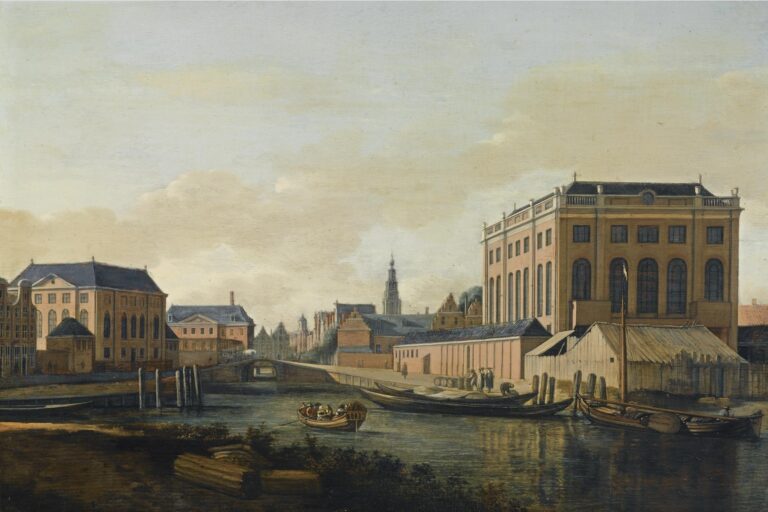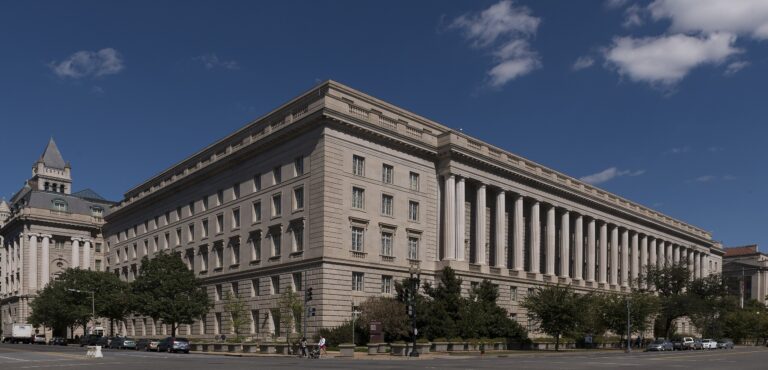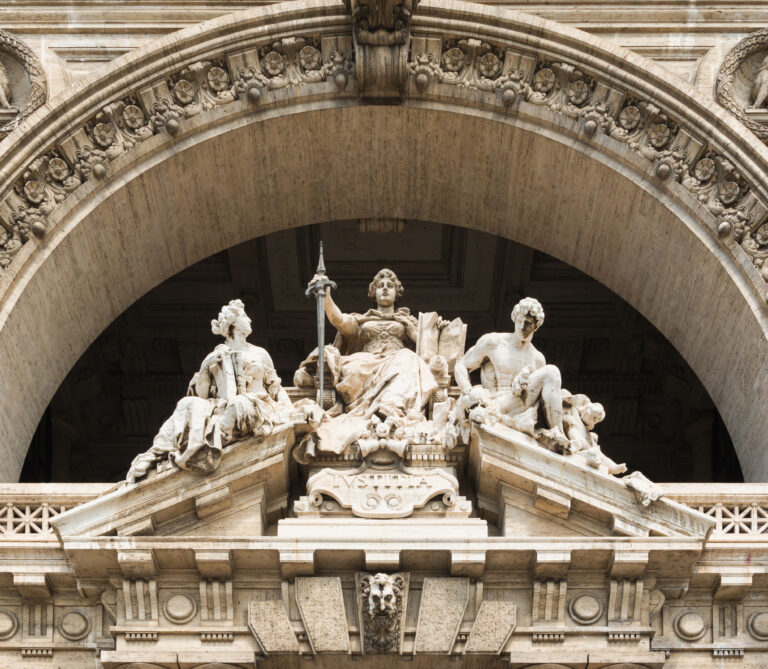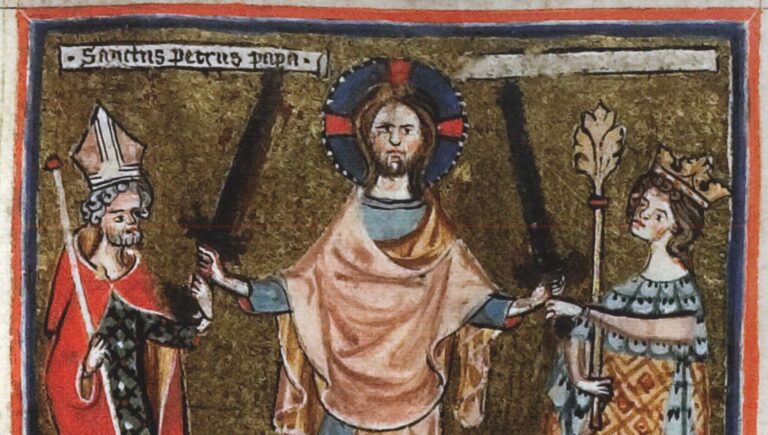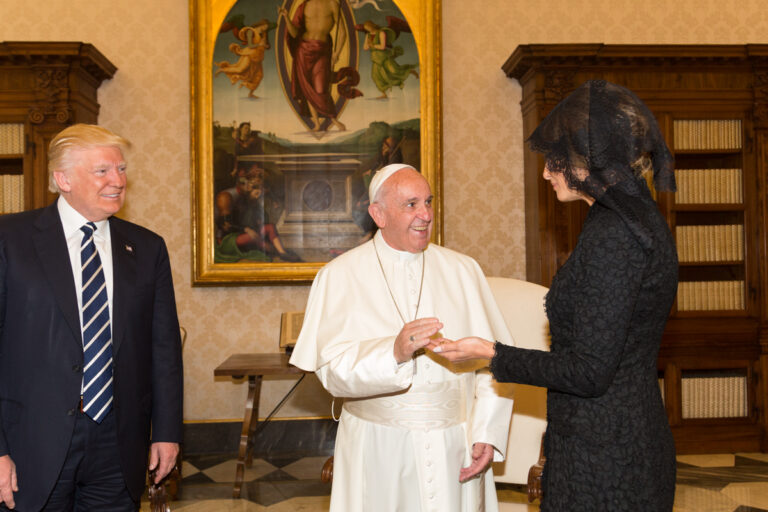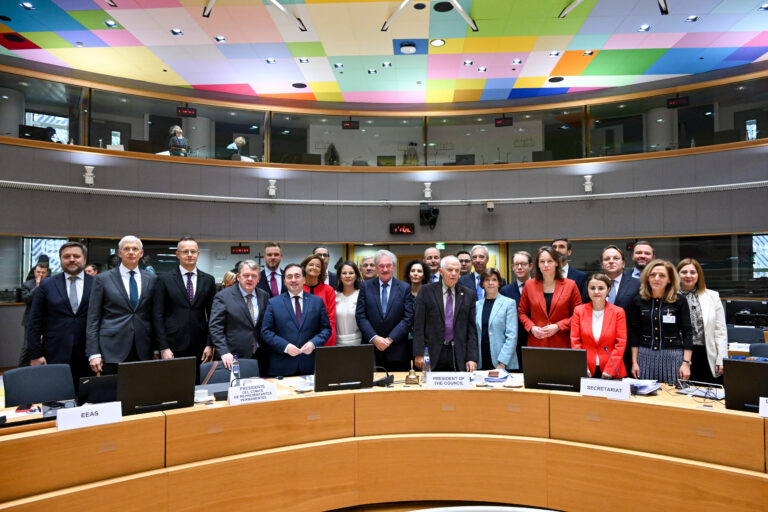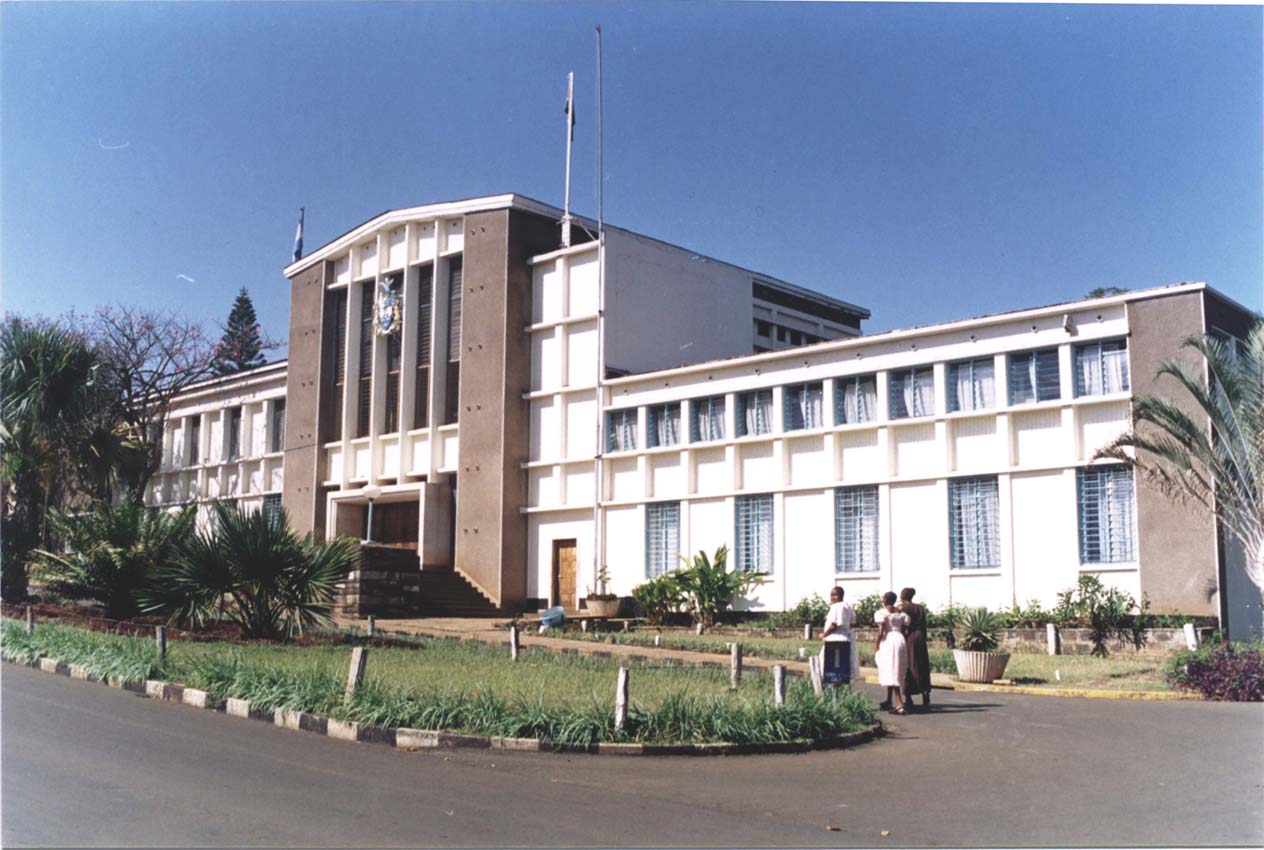
“No Idols In Our Town”: Competing for Religious Space in Kisumu, Kenya
Esha Faki Mwinyihaji
Photo of Kisumu Municipal Hall by (WT-fr) Omondi (CC BY-SA 3.0)
Kisumu is a cosmopolitan city that lies on the shores of Lake Victoria in Western Kenya. The city is inhabited by the majority Luo ethnic group and other Kenyan ethnic groups as well as Arabs and Asians East Africa who work in the city and its environs and have made this city their home. Its diverse population includes a number of religions, including Christianity, Islam, Hinduism, Jainism, and Sikhism, with a majority of the inhabitants being Christians. In December 2013, the Sikh community was celebrating their 100-year anniversary of their forefathers settling in Kisumu. They decided to erect a monument to mark the anniversary. However, the monument was destroyed by irate Christian youths as soon as it was unveiled because it was considered an idol and a form of satanic worship. The Kenyan Constitution guarantees freedom of worship, but many religious groups face sanctions on the use of public space to express their religiosity. This paper examines the contestation of public space between the Sikh community and Christians in Kisumu.
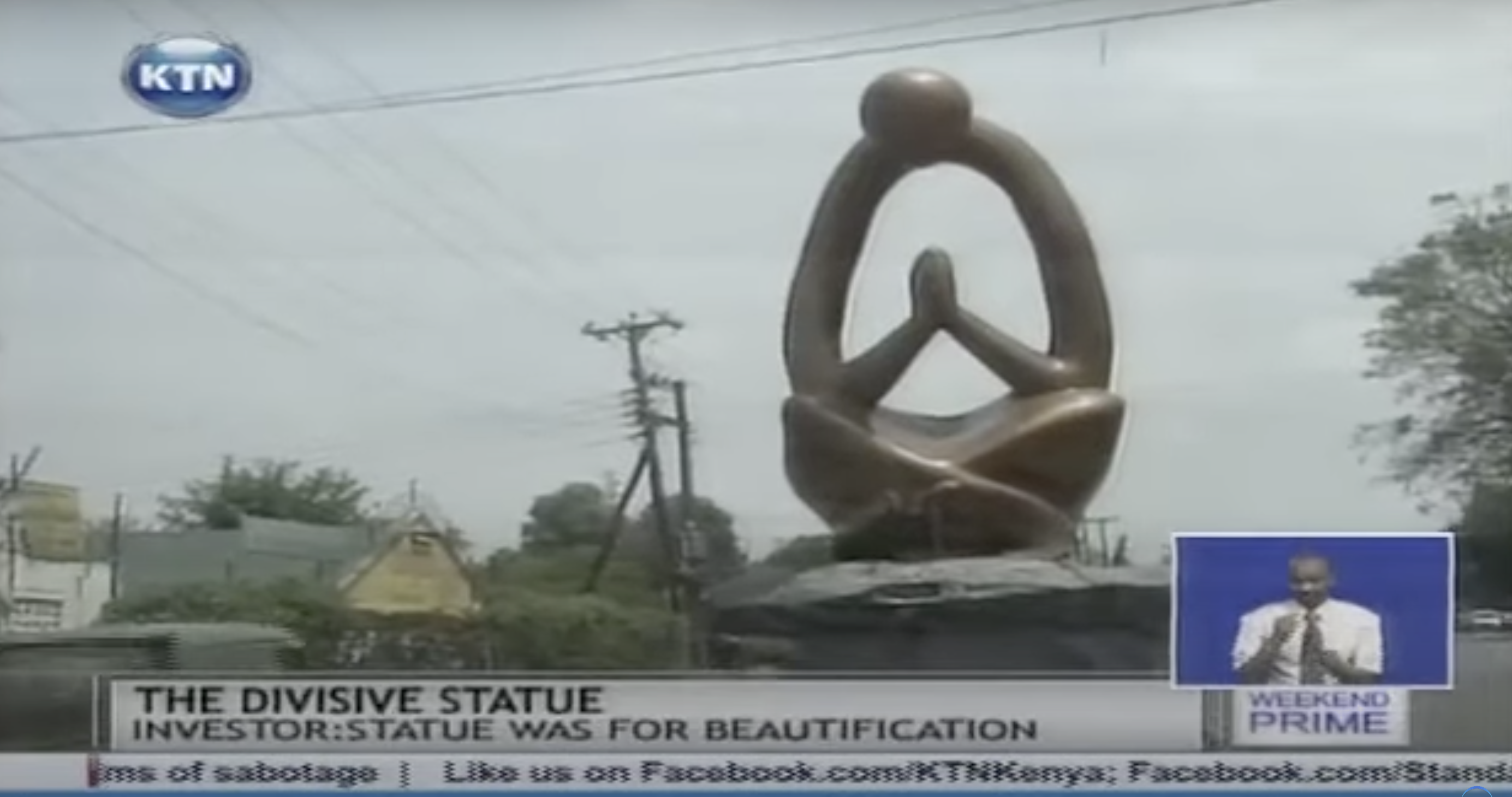
The Sikh Community in Kisumu
The first Sikhs arrived in Kisumu, then known as Port Victoria, in 1913. The Sikhs were brought over from India to build the old Uganda Railways were skilled workmen – carpenters, blacksmiths, and masons. After the completion of building the Kenya-Uganda railway, some Sikhs and other Indians decided to go back to India either due to loneliness or isolation. But some Sikhs remained in Kenya, and they were soon joined by their educated brothers. There would have been no railway without these Sikhs. A number of policemen, ranging from inspectors to constables, were also sent from India to become the vital instrument of maintaining law and order in the Kenya Protectorate. They remained in the country for several years. Many, but not all, of the original Sikh arrivals returned to India to be replaced and augmented by others who came of their own volition.
The Sikhs established themselves as a skilled, religious and hardworking community with phenomenal contribution to the economies of these countries. Their skills and industry were always in great demand. The Sikhs penetrated into every nook and corner of East Africa to erect the buildings and to build the roads, to undertake general maintenance work on the farms, and to serve in the offices and to assume charge of the hospitals. The manner in which the Sikhs increased their usefulness to Kenya is a saga of resourcefulness, initiative, and perseverance. They undertook with confidence any type of work which required skill and industry. They became highly successful farmers. They responded magnificently to the growing needs of the country by improving and diversifying their capabilities. They became contractors and furniture makers.
In 2015, according to the chief priest at the Singh Sabha Temple Kisumu, there were about 100 Sikh families in Kisumu with a total of about 250 people. There are two Sikh congregations in Kisumu, the Ramgharia Sikh Sabha and Singh Sabha. The Siri Guru Singh Sabha maintains a Gurdwara, a primary school, and a dispensary along Mosque Road. The dispensary serves people of all races and charges a minimal fee. Occasionally, the Sikh community organizes free eye clinics for locals who have eye problems. Apart from the activities of the gurdwara, members of the Sikh community are engaged as repair garage mechanics, road contractors, building contractors, and hotel owners. All these business premises employ a number of Kenyans of diverse origins, African and Asian alike.
The Monument
In October 2013, the Sikh community in Kisumu decided to erect a monument to celebrate their hundred years in Kisumu as well as the Golden Jubilee of Kenya’s independence. Monuments are popular ways of commemorating important events of a country or people in contemporary times, and many important events are celebrated with a monument. Archaeologist Josephine Shaya defines a monument as “a structure created to commemorate a person or event… societies use monuments to reconstruct the past rather than faithfully record it.” Shaya adds that monuments preserve the past by making particular historical interpretations concrete at the expense of other stories. The interpretations of a monument may differ from one person to another, and also one historical moment to another despite giving an elusive permanent meaning as a figure.
In order to recognize their achievements and the solidarity with the Kisumu community extending across all races, the Sikh decided to put up a peace monument to commemorate the anniversary. A monument has a way of crystallizing human experience and memory. Images construct peoples’ perceptions, and monuments are important structures of human consciousness. The monument was constructed in Kisumu town by Oshoto Ondula, who had been commissioned by the Sikh community to sculpt the monument in a quarry within Kisumu County. The statue was a five-meter sculpture made of stone with cement and steel inside. It was smoothed by sandpaper and painted a bronze color. Ondula made the sculpture in a smooth, modernist semi-abstract style so as to symbolize the universality of devotional prayer. The figure had no eyes, nose or mouth and it was Ondula’s design to make it in the shape of someone with their head bowed in prayer.
The Singh Sabha Sikh community began the beautification of a roundabout that was next to their temple in Kisumu towards the end the year 2013. It was a small water fountain and in the middle of the fountain, they installed a statue. The monument was completed towards the end of January 2014. Once completed, the monument was veiled, and people began speculating as to what it can be. On February 8, 2014, the monument was unveiled to the public for the first time. As soon as it was unveiled, it was brought down ruthlessly. Some residents of Kisumu claimed the statue represented “devil worshipping and a pagan god”. Prior to the unveiling of the monument, there were protests surrounding the monument which gained momentum after faithful allied to Pastor David Owuor’s Ministry of Repentance and Holiness, a local Pentecostal church, began on February 6, 2014, raising the alarm that it was evil. They expressed the view that the monument was a bad sign to the town, since it signified idol worship in predominantly Christian Kisumu. The faithful from Pastor Owuor’s church walked around town wearing sacks to protest the presence of the monument in the city. These protestors were joined by other members of the public making it a huge crowd.
The monument was pulled down following three days of protests by Kisumu residents who said it portrayed Kisumu as a haven of idol worshipers. Prior to the removal of the monument, the former prime minister of Kenya, Raila Odinga, attempted to convince the residents that the monument was a sign of peace by the Sikh community. Raila Odinga is an influential figure in Kisumu who was thought to be a pacifier, but he was ignored by the crowd in this instance.
According to the Siri Guru Singh Sabha Chairman, Charjeet Hayer, the monument was intended to commemorate 100 years of the Sikh community living in Kisumu. Hayer emphasized that the monument had nothing to do with religion and appealed to Christians and Sikh community to live in peace and harmony. He also stressed that the statue was intended to commemorate Kenyan independence. The Hindu Council of Kenya wrote a protest letter to the Kisumu County government over the removal of a monument erected by the Sikh community. “We wish to point out that the new constitution upholds the fundamental rights and dignity of all races and groups of persons,” the Hindu Council said. The Council reiterated that Kisumu County authority had the legal duty to protect all races and ethnic communities that were unfairly targeted. But these pleas were ignored, and the monument was destroyed.
Religious Freedom in the Kenyan Constitution
The destruction of the Kisumu monument calls for introspection on the issue of religious freedom in Kenya. The Constitution of Kenya, 2010, provides for freedom of religion in public and private life, separates church and state, and guards its citizens from religious discrimination and unwelcome religious pressure. This is enshrined in Chapter Four of the Bill of Rights, Article 32 which contains the following provisions:
- Every person has the right to freedom of conscience, religion, thought, belief and opinion.
- Every person has the right, either individually or in community with others, in public or in private, to manifest any religion or belief through worship, practice, teaching or observance, including observance of a day of worship.
- A person may not be denied access to any institution, employment or facility, or the enjoyment of any right, because of the person’s belief or religion.
- A person shall not be compelled to act, or engage in any act, that is contrary to the person’s belief or religion.
Although Kenya has a significant number of Christians–about 75%–it is not considered a Christian country. The Kenyan Constitution prohibits any discrimination on the basis of religion and outlines a vision for a unified nation of diverse religious practices. All public officers, state organs, and their employees have the responsibility to understand and address the special needs of religious communities.
Questions Arising from the Destruction of the Kisumu Monument
Public land
Initial questions arising from the monument discussion was whether the requisite procedures were required to acquire the public land and whether there was discussion beforehand about the nature of the monument to be erected. The monument belonging to the Sikh community did appear to be established after following the appropriate procedures. Permission was granted to erect the monument in celebration of the Sikh community’s hundred years in Kisumu. However, an executive member for physical planning in Kisumu County, engineer Vincent K’odera, maintained that the county had approved creation of a water fountain and not the monument. Therefore, according to him, the monument erected was a breach of contract and the terms of what was originally agreed.
Public participation
There were further questions to do with public knowledge of and participation in the decision. The monument was erected on public land, and people have fundamental rights of participation in decisions about the use of public resources. They had a right to be informed and consulted and for all stakeholders to agree from an informed position. Public participation should inform planning, organizing, or funding of public activities and displays. With regard to the said monument, it was argued the county government did not conduct meetings to seek the opinion of the public on the project.
Religious symbols
Touching on questions of religious freedom, there were questions about whether the Sikh Community had any rights to exhibit their religious symbols outside the confines of their gurudwaras. As noted above, the Kenyan Constitution allows for freedom of religious expression in principle. For example, there have been cases in Kenya where the Islamic hijab was banned in schools as discriminating against other students. In those cases, it was argued that school uniforms should not have special reference to religious beliefs. However, Sikh students in Kenya have not been barred from wearing a turban.
In the case of the Kisumu monument, the monument was next to the gurdwara. Religious relics and monuments have always existed within the walls of religious premises. But this was the first instance for Sikh community to exhibit their religiosity beyond their compounds in Kisumu. The monument was mistaken for a religious relic, while the Sikh community considered it to be an aesthetic relic. Lack of knowledge about what Sikhism religion is all about prompted most of the protesters to conclude that the statue was idol worshipping. So, together with the members of Pentecostal Church, they considered the monument to be an idol and that displaying it would make God angry.
“Idol worshipers“
As noted above, the Kenyan Constitution prohibits any discrimination on the basis of religion and, most directly in its Preamble–and it outlines a vision for a unified nation of diverse religious practices. Kenyan constitutional law prohibits forced religious conversion, as no one may compel another to perform, observe, undergo, or adhere to a religious practice or rite that is either contrary to one’s beliefs or involves the expression of an unheld belief. It is in this regard that the question emerged of whether Christians and Muslims had a right to judge and discriminate against the Sikhs as “idol worshippers” and to condemn the monument as forcing questionable beliefs onto the public. However, it is also arguable that Kisumu County’s acceptance of the monument upheld the spirit of the Constitution and the idea of Kenya as a country with diverse religious practices and tolerance of other faiths, including the Sikh community’s centennial celebration of its arrival in Kenya. Instead, destruction of the monument served as an occasion to exercise tyranny of a majority and a high level of intolerance.
Public education
A final question to note is whether the local inhabitants of Kisumu had sufficient exposure to public art and monuments to understand their symbolism. It is arguable that the people of Kisumu have not been exposed to public works of art, especially statues of different forms. In the past, Kyanguli Secondary School had sculptures within the school compound. There was fire at one point, and some religious leaders attributed the fire to satanic images and idols that were in the school compound. Many local people lack exposure to works of art as part of aesthetic beauty to be admired as things that can beautify the city. Due to the ignorance of Sikh beliefs, the people simply concluded that the monument was an idol and satanic. Yet, according to the Sikh themselves as well as the creator, Oshoto Ondula, the monument was a symbol of universal devotion and prayer.
To some observers, the presence of the Sikhs had not had much impact in Kisumu, despite becoming a very affluent community. Other people of Kisumu were poor, while the Sikhs were very wealthy. In their view, the monument was a “symbol of Asian continued economic dominance over Africans in Kisumu.” The same resident stated that “if it isn’t destroyed again, it will simply stand as a divisive symbol of inequality between the Asians and African communities.” Thus, the Kisumu monument serves as an example of how one symbol is interpreted differently by two people of different faiths. To the Sikh, it entrenched them as bona fide residents of Kisumu County and as one with the local people. Yet to the locals, it was a symbol of economic colonialism.
The Complexity of Legislating Religious Freedom
Human rights and freedoms are not absolute or exclusive, particularly in pluralistic societies. When one freedom is generally being moderated, it is curtailed by another. In the right to religious expression, there are two dynamics according to South African religion scholar Stephan Pretorius, who maintains:
“The right to freedom of religion has two dimensions that can be distinguished namely; forum internum and the forum externum. The forum internum – internal aspect, refers to the freedom to believe, which embraces the freedom to choose one’s religion – religious or non-religious. The internal dimension of religious freedom is absolute. No limitations are linked to this dimension of religious freedom.”
Drawing from the experience of the Sikh community in Kisumu, no one can interfere with this dimension of their religion. They have a right to believe and embrace their religious beliefs in their private sphere, and this sphere extends throughout their temple compound with no limitations. However, the forum externum, or the external aspect of their religion raised some questions for the wider public as far as the expression or manifestation of their religious beliefs. As Pretorius observes, “The external dimension, by its nature, is relative and can therefore be limited by the public authorities.” The Sikh community argued that the monument was for aesthetic reasons and presented a universal message of devotion. However, the public had made the decision to destroy what they considered to be “satanic.”How the Kenyan courts interpret and apply freedom of religion in judicial proceedings matters greatly. It holds significant weight for those who seek redress from the courts, and it holds profound importance for those who find themselves as subjects of these claims. Ordinarily, the role of governments in this regard is that of unbiased umpire in regulating and managing freedoms directed towards peaceful coexistence of different and competing human groups. In recent years, however, and in the light of increased religious tension, the Kenyan government has become embroiled in building and promoting national cohesion through curtailing citizen freedoms including religious expression. In the end, the monument was brought down, and the protesters were not punished. ♦

Esha Faki Mwinyihaji received her MPhil degree in Islamic Studies from Moi University in 2001 and her doctorate in religion from Maseno University in 2009. In 2012-2013 she was a postdoctoral fellow with the Foundation for Interreligious and Intercultural Dialogue at the University of Geneva. Currently she is a lecturer at Maseno University.
Recommended Citation
Mwinyihaji, Esha Faki. “”No Idols In Our Town” Competing for Religious Space in Kisumu, Kenya.” Canopy Forum, February 14, 2025. https://canopyforum.org/2025/02/14/no-idols-in-our-town-competing-for-religious-space-in-kisumu-kenya/.
Recent Posts




